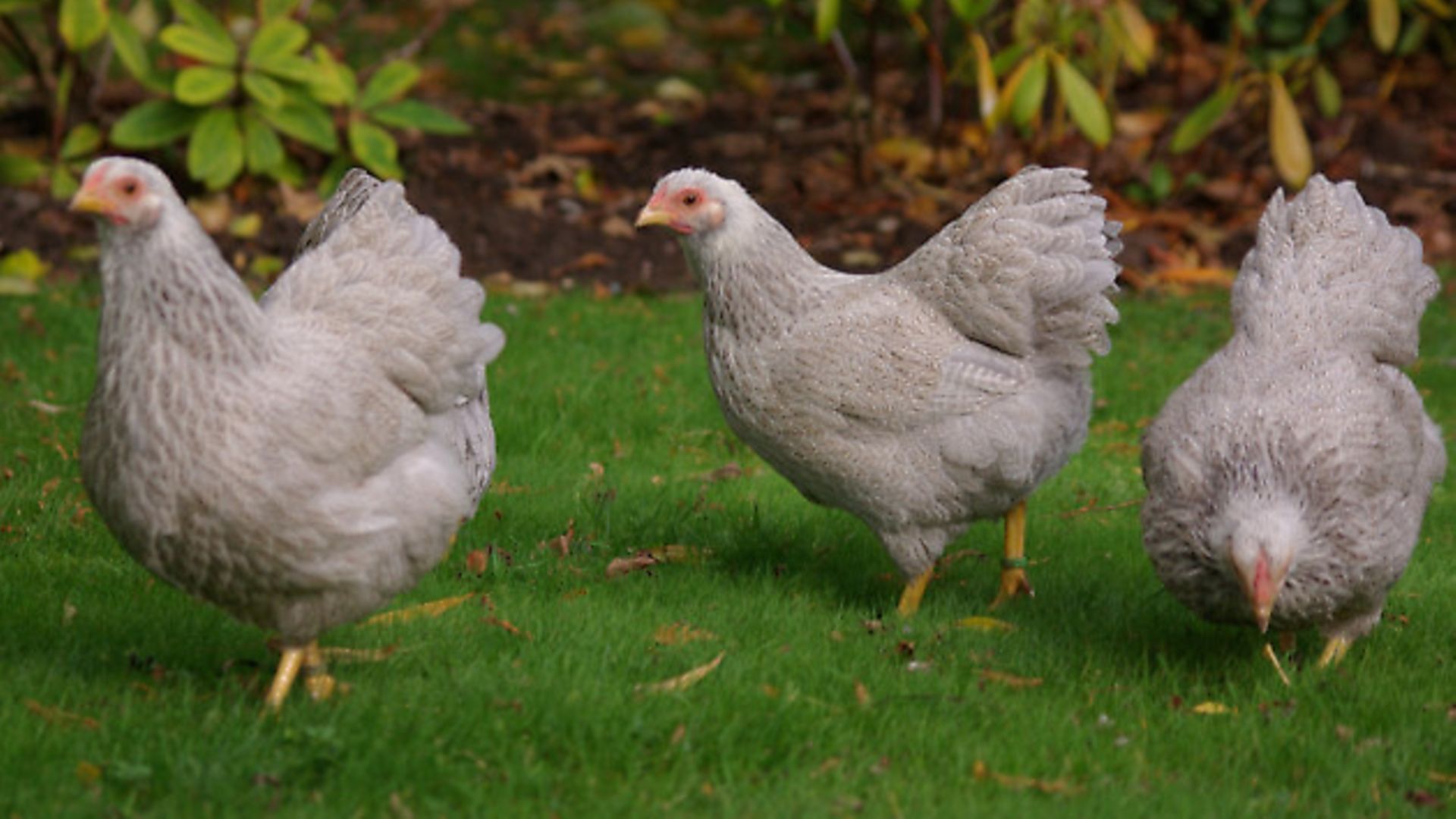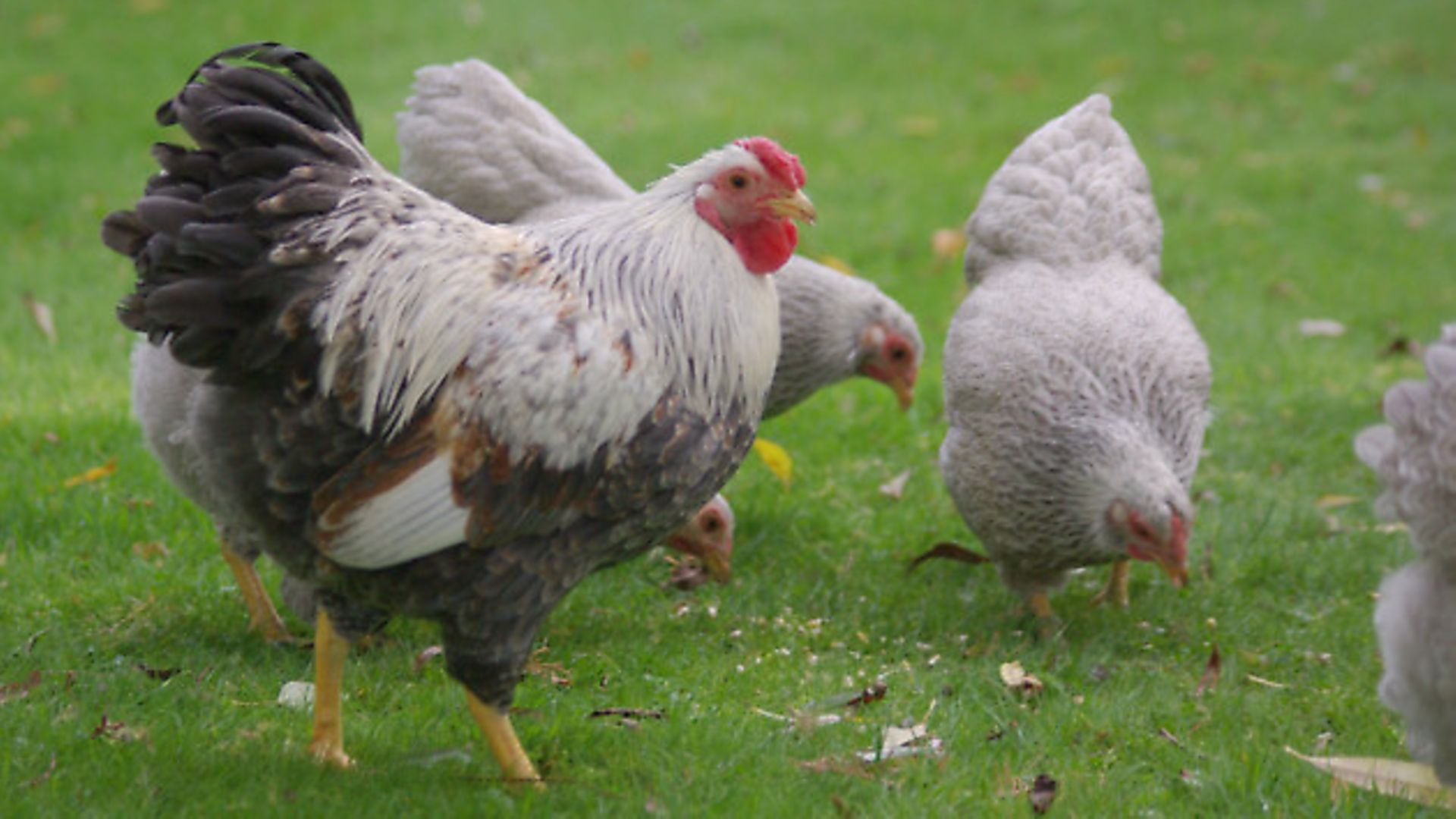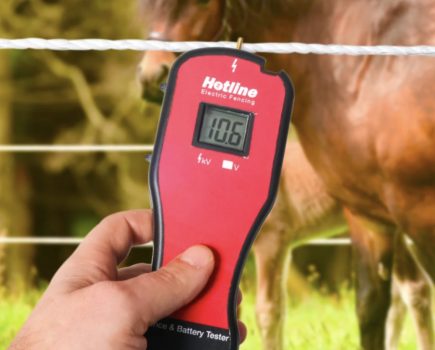‘Poultry Pals’ Andy Cawthray and Grant Brereton continue their visits to leading poultry keepers. This month they talk to a specialist breeder, Geoff Parker, from the Wirral

Geoff Parker’s introduction to the world of poultry came quite late in life, when he saw and obtained some beautiful barred Rocks from a nearby farm. He became determined to keep the breed for exhibition purposes. He saw Partridge and Pencilled Wyandotte bantams and fell in love with them. Geoff was a professor of zoolgy at Liverpool University, so understood well the mechanics of inheritance in his newly acquired bantam breeds. He went on to become the Partridge and Pencilled Wyandotte Club secretary, and by now has been the president for many years. He has a phenomenal winning record at shows and a consistency in quality that has remained for decades.
What breeds (and colours within them) do you now keep?

I keep pullet-breeding Partridge and Silver Pencilled Wyandotte bantams, and their blue varieties (Blue Partridge, Blue Silver Pencilled) and barred Plymouth Rock bantams. I started with barred Rocks around 1980, and with the Wyandottes five or six years later. I have also kept Rosecombs, and other colours of Wyandottes (White, Silver Laced and Gold Laced) and Buff Rocks in the past.
Your plan was to cut down on breeding this year. Did you stick to that plan?
Well, yes … although I have had considerable help by a couple of incubator failures. So this year I have bred only a few more than half the numbers of recent years. I have just had my 70th birthday and feel that I should make life a bit easier!
Does it still give you the same buzz when you get up early before a show and box the birds knowing you have done all you can to make them perfect?
No, I usually feel quite depressed! The problem – especially these days after I have had them for so long – is that I am never satisfied with any of them. A day or two after I have washed them, while I am pen-training, I may feel pleased with one or two of my team, and I do get a slight buzz then. But I am acutely aware that all of them (some more than others) could be better… Perfection is very, very elusive.
Do you still get nervous about threats to the current year’s crop – weather, mite, disease etc, and is there anything else which unsettles you?
This year was a real nightmare for the breeding pens, with constant rain from December until mid April. Mites are a persistent problem and a constant battle, as are rodents. After one or two early battles, I managed to stay free of mites for a period of many years, but in the last three to four years red mite have been a real pain. And last year, after the two big shows, I picked up northern mite, which is also proving to be a menace.
I had to chase a fox away from the pens a few of weeks ago, and that was (still is) a real worry! How nice it would be not to have these problems.
If you were to call it a day tomorrow, what wouldn’t you miss about the hobby?
Culling unwanted or inadequate stock, which is necessary – but I hate doing it. And maybe cleaning out, though it’s nice to see the birds in clean pens when it’s done.
What would you miss?
Almost everything else! But especially, I would miss hatching chicks, and seeing them with broodies (Partridge and Silver Pencilled Wyandotte bantams are unsurpassable as broodies – why people keep cross-bred Silkies I shall never understand!). And I would miss just walking along the pens looking at the stock in prime condition when the breeding pens are just set up around New Year. But perhaps most of all, I would miss the shows and meeting many good friends.
What is your approach to breeding – do you believe in breeding from pairs, trios or larger breeding pens?
I usually keep my best 6-8 pullets each year (it will be less now that I am breeding less) with one cockerel. I also have another male with up to 18 hens, accumulated from the best pullets from several past years.
Andy says
I have the pleasure of owning a pair of barred Rocks from Geoff. Their nature and sheer quality compared with the ones I had back at home was outstanding.
Given Geoff’s background as a zoologist and his understanding of poultry genetics, I can understand how such knowledge can lead to success even if you don’t come from a livestock or show background.
Geoff is a classic example of how enthusiasm and interest when coupled with a touch of ‘lab coat’ can lead to a successful poultry breeding career. It takes time, though, and as Geoff makes clear, there are no magic panaceas to the perennial problems such as red and northern fowl mite. These are trials that befall most, if not all poultry keepers at some point.
His success at the major shows is evidence of his desire and tenacity and his contribution to the poultry breeding world will always be admired not least by myself as I look over my barred Rocks.
Grant says
Geoff has been a friend of mine and a great source of inspiration for about 17 years. His focus on perpetuating breed quality is very enviable, and his show birds always have the correct attributes – good yellow legs, correct shape, plumage markings, head, eye colour, and balance. His birds also lay very well, and I can atest to their usefulness as broody hens – the Partridge Wyandottes in particular.
It is a testament to Geoff that he has such willingness to share his knowledge, and does so frequently through ‘easy-to-understand’ breed club and magazine artcles.
Geoff is what I would regard as a specialst – someone who mainly focuses on a single variety to breed and improve, and his ultimate favourite is the Partridge Wyandotte (as is mine). This is the only true way of getting anywhere in the hobby; you have to know what you are aiming towards, source good stock and then invest a lot of time, entusiasm and energy into making the best of it.
Image(s) provided by:
Archant
Archant







